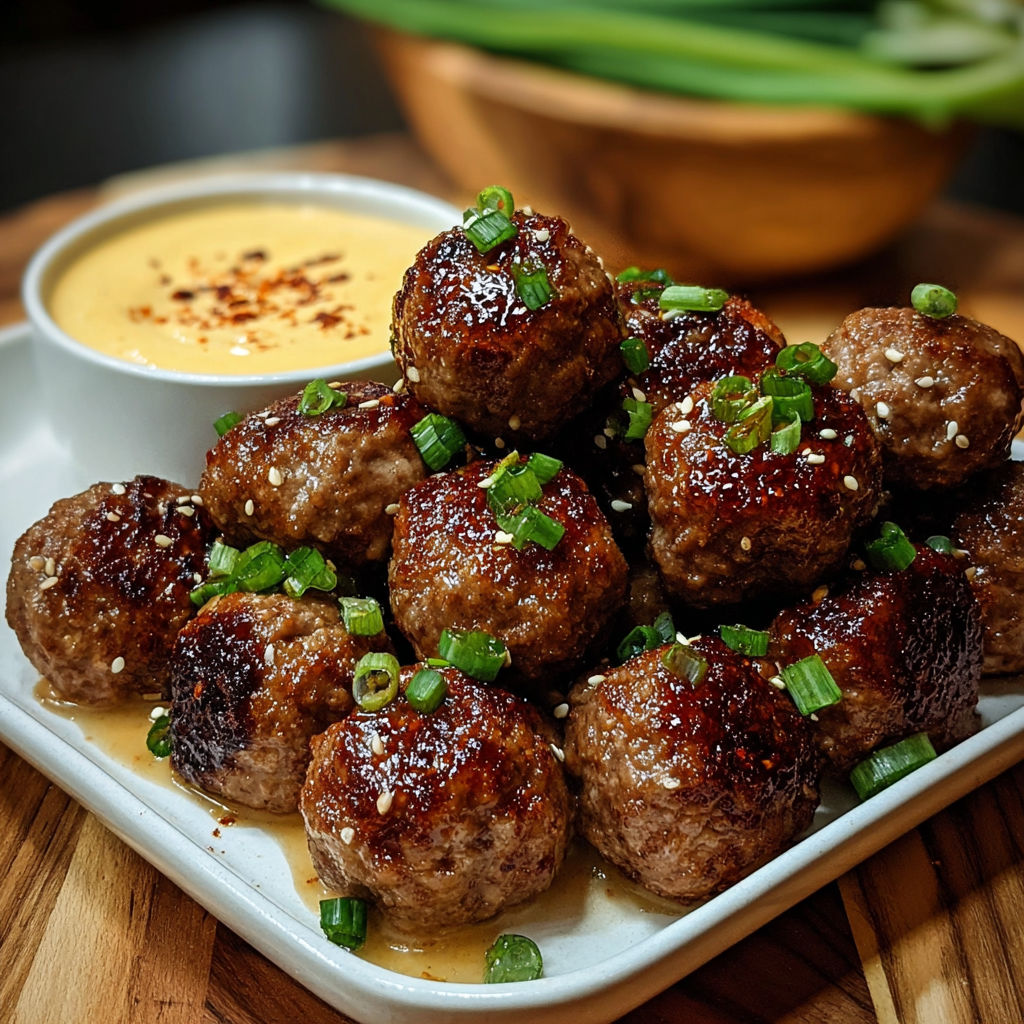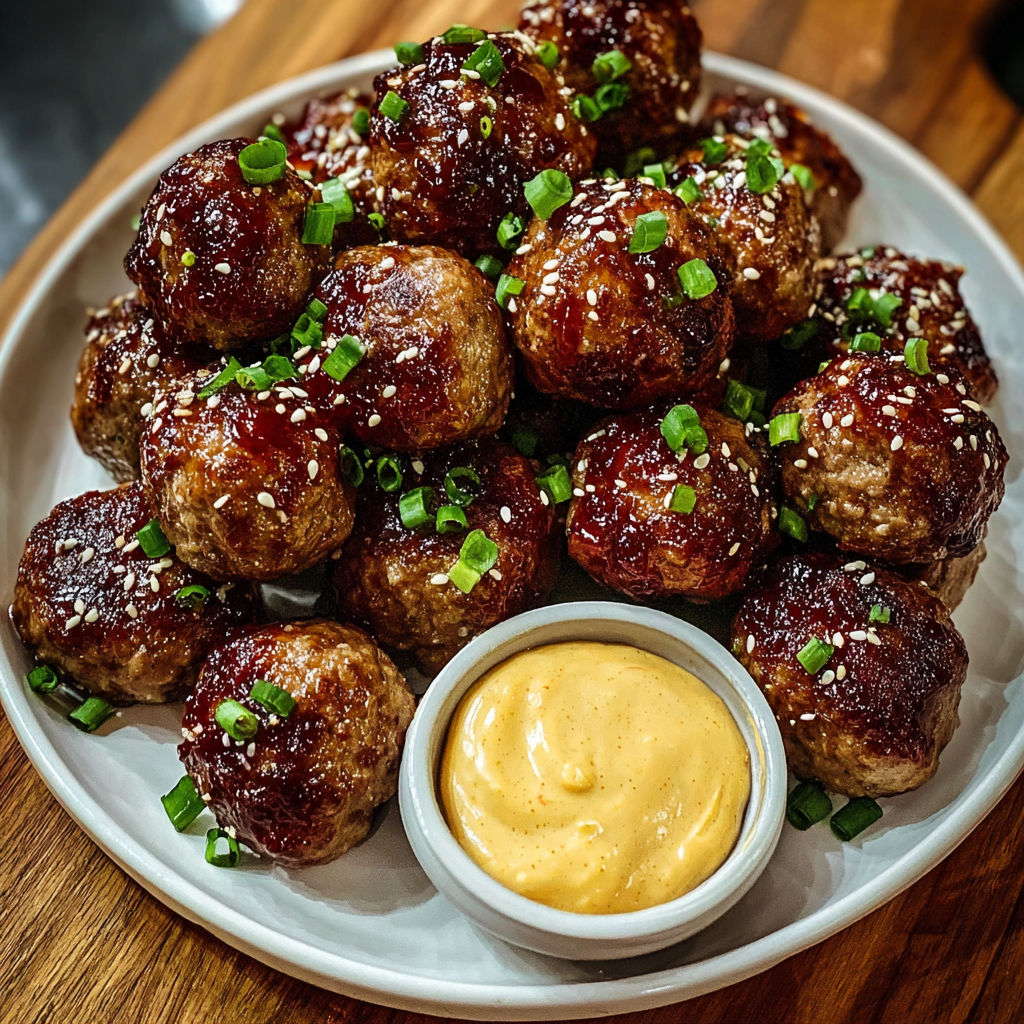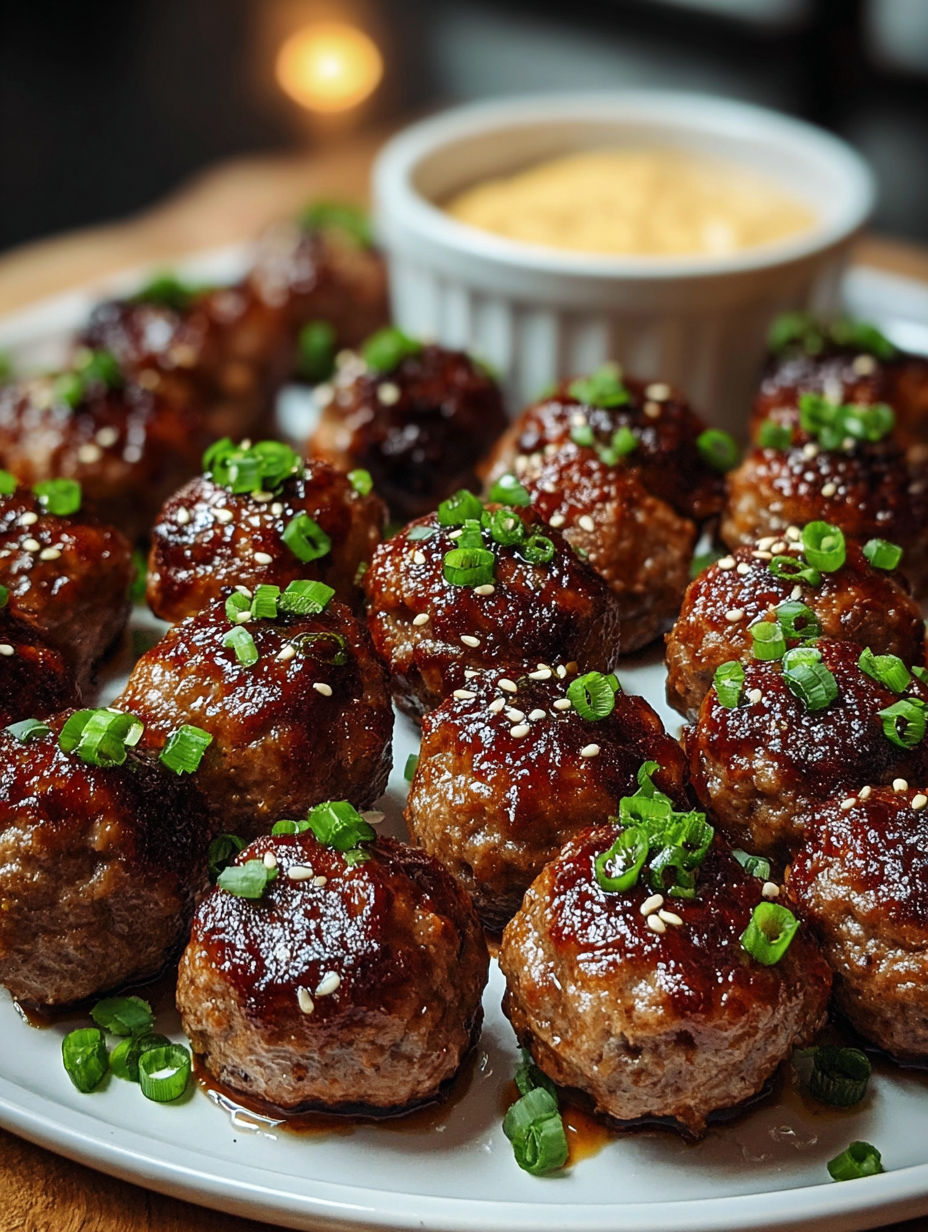 Pin it
Pin it
These beef meatballs bring Korean flavors to life, mixing bold umami with a perfect blend of sweet, tangy and hot elements that Korean food is known for. The heat comes from gochujang while toasted sesame oil adds that wonderful nutty smell that makes you want more.
Why You'll Love This
I created these meatballs when I needed something special for a gathering that would stand out from typical finger foods. They were gone in minutes and I barely got to try them myself. Now they're what I make when I want to wow everyone without spending all day cooking.
Ingredients
- Ground beef forms the base - grab 80/20 for more moisture and better taste
- Fresh ginger and garlic build that real Korean scent base
- Green onions give a light kick and nice color pop
- Egg works as the glue for everything
- Breadcrumbs help keep the right consistency
- Soy sauce brings deep flavor to every bite
- Sesame oil adds that classic nutty Korean touch
- Gochujang is the Korean hot paste that makes these unique
- Brown sugar cuts the heat and helps things brown nicely
- Rice vinegar brings some zing and balances the fat
- Cornstarch can be added to lock in juices for moister results
- Sesame seeds and scallions make them look good and add crunch
- Spicy mayo gives a creamy hot dip that fits perfectly
How To Make Korean BBQ Meatballs
- Prep the oven
- Get your oven hot at 400°F and put parchment on a baking sheet. The paper stops sticking and makes cleanup way easier while helping the bottoms brown evenly.
- Mix the meat mixture
- Put everything except the toppings in a big bowl. Mix with your hands but don't work it too much or they'll get tough. You want it to stick together but still feel soft enough to shape easily.
- Form the meatballs
- Take about 2 spoonfuls of mix and roll gently in your hands. Wet your fingers a bit to stop sticking. Try to make them all about 1inch big so they cook the same. Put them on your tray with space between.
- Bake to perfection
- Cook for 18 to 20 minutes until they hit 165°F inside. They should look brown outside but stay juicy inside. For extra color, brush with a mix of gochujang and honey during the last 5 minutes.
- Prepare the dipping sauce
- While they're cooking, mix mayo, gochujang, lime juice and honey until it's smooth. Your sauce should turn a nice pink color with just the right mix of creaminess, tang and spice.
- Garnish and serve
- Move the hot meatballs to a plate, throw on lots of sesame seeds and some extra cut green onions. Serve them right away with the spicy mayo on the side.
Gochujang really makes these special. I found it at a Korean store years back and it changed my cooking forever. It somehow adds depth, heat and sweetness all at once. My hubby usually can't handle spicy stuff but he'll always make room for these meatballs.
Make Ahead and Storage
These Korean meatballs actually taste better the day after cooking when all the flavors have mixed together more. You can mix up the meat a full day ahead and keep it in the fridge. Or you can shape the raw meatballs and store them on a paper-lined tray with plastic wrap for up to 8 hours before cooking.
Perfect Pairings
Make a full meal by putting these meatballs on top of some steamed rice with kimchi nearby. If you're watching carbs, try them with a fresh cucumber salad tossed in rice vinegar and sesame oil. They're also great wrapped in lettuce leaves with thin carrot and cucumber slices that balance out the rich meat taste.
 Pin it
Pin it
Ingredient Substitutions
Don't have gochujang? Mix 1 tablespoon sriracha with 1/2 teaspoon honey instead, though it won't taste exactly the same. Ground turkey or chicken works great for a lighter option, just add an extra 1/2 tablespoon of sesame oil to keep them moist. Need gluten-free? Swap the breadcrumbs for cooled cooked quinoa or crushed rice crackers.
 Pin it
Pin it
Frequently Asked Questions
- → Can I prepare these meatballs early?
Absolutely! You can mix the ingredients up to a full day ahead and chill in the fridge. Alternatively, you can cook the meatballs, let them cool, and refrigerate in a sealed container for up to 3 days. For leftovers, warm them in a 350°F oven for about 10 minutes.
- → What's a good substitute for gochujang?
If gochujang isn't available, you can mix equal parts of miso and sriracha with a touch of sugar. Alternatively, a combo of sriracha or sambal oelek with a drizzle of honey works, though it won't be exactly the same.
- → Can these meatballs work for gluten-free diets?
For gluten-free options, swap out breadcrumbs with gluten-free ones or use crushed rice crackers. Ensure the soy sauce or tamari you're using is gluten-free, as regular soy sauce contains wheat.
- → How should I serve these meatballs?
They're super versatile! Enjoy them as a starter paired with the mayo dip, over warm rice with veggies as a meal, wrapped in lettuce with kimchi, or even stuffed into a sandwich with quick-pickled veggies.
- → Could I swap the beef for something else?
Totally. Pork, turkey, or chicken are great stand-ins. You could even mix meats, like beef and pork, for richer flavor. Just keep in mind, leaner meats like chicken might need extra fat for moisture.
- → Are these meatballs spicy?
They're mildly spicy with 1 tablespoon of gochujang. Feel free to dial up or tone down the heat by adjusting the gochujang in the mix and dip to your liking.
